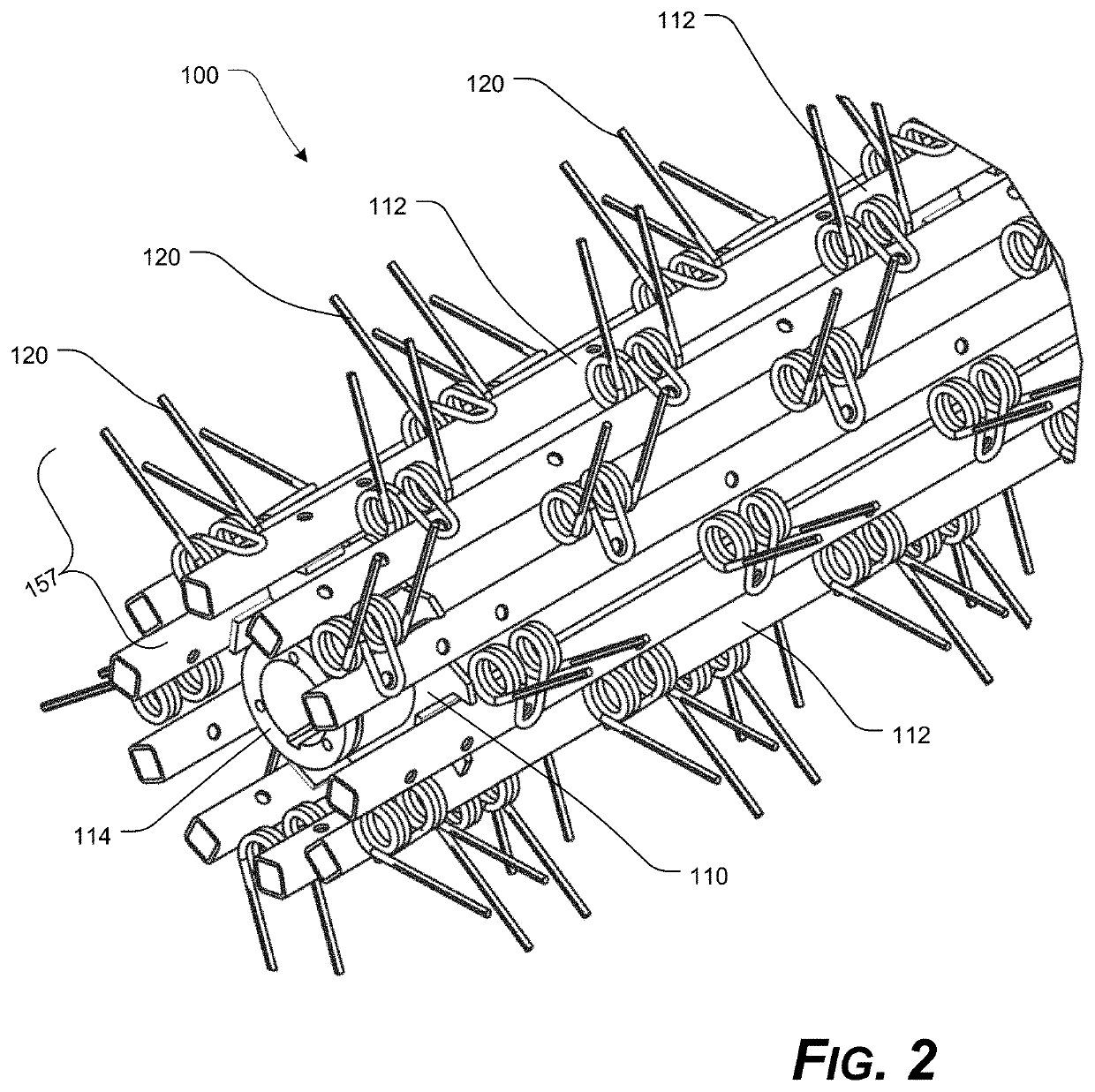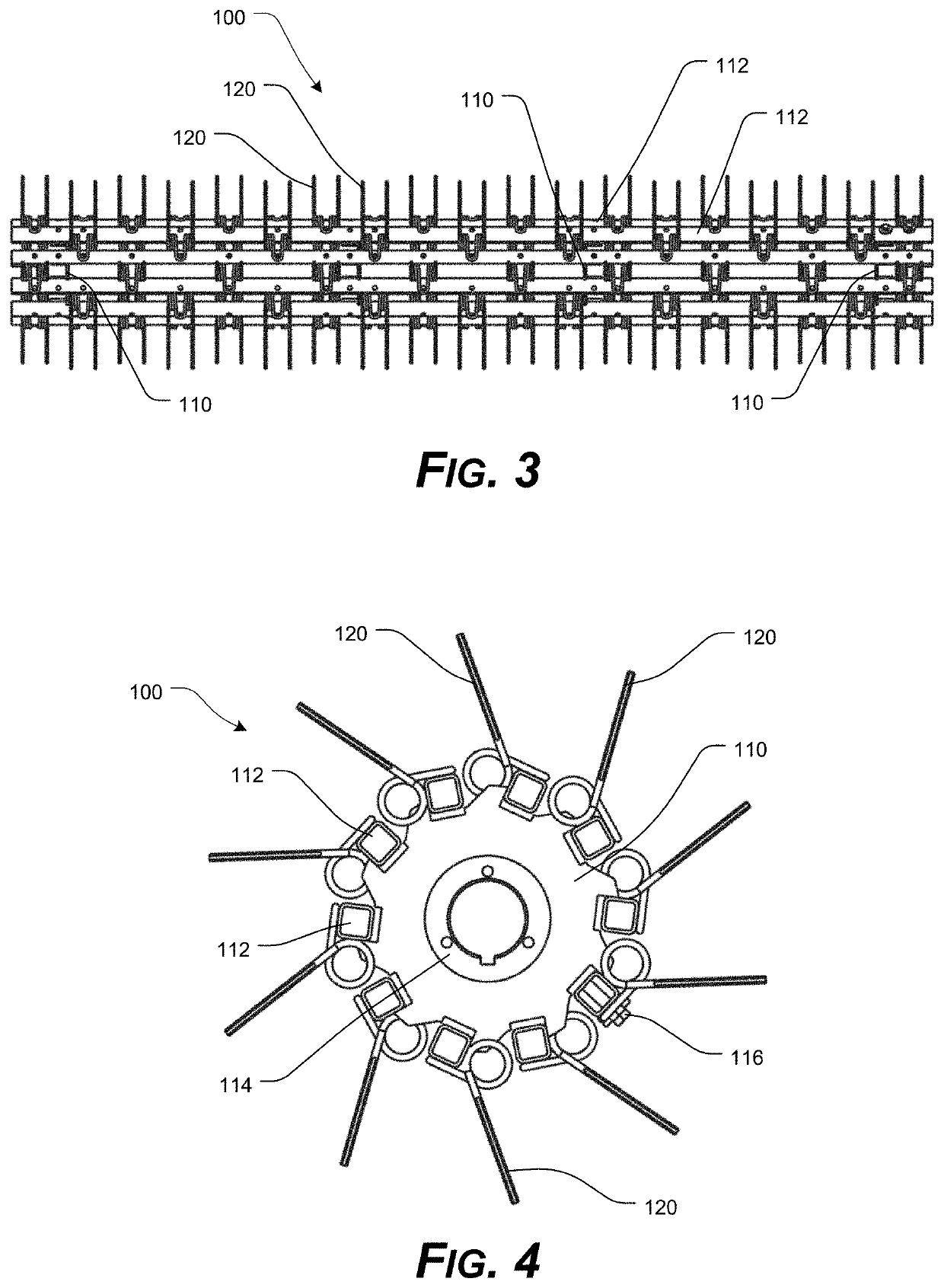Threshing/Separating Device Having Tined Accelerator and/or Axial Rotor System
a technology of axial rotor and threshing/separating device, which is applied in the direction of digger harvester, agriculture, agricultural tools and machines, etc., can solve the problems of incompatibility with other styles of feed cylinder, inefficient handling of peanuts or similar root types, and inability to meet the needs of the user, so as to achieve gentle and efficient handling, reduce damage, and improve the effect of handling
- Summary
- Abstract
- Description
- Claims
- Application Information
AI Technical Summary
Benefits of technology
Problems solved by technology
Method used
Image
Examples
Embodiment Construction
[0051]For simplicity and clarification, the design factors and operating principles of the axial threshing / separating components and / or systems according to the presently disclosed systems, methods, and / or apparatuses are explained with reference to various exemplary embodiments of axial threshing / separating components and / or systems according to the presently disclosed systems, methods, and / or apparatuses. The basic explanation of the design factors and operating principles of the axial threshing / separating components and / or systems is applicable for the understanding, design, and operation of the axial threshing / separating components and / or systems of the presently disclosed systems, methods, and / or apparatuses. It should be understood that the axial threshing / separating components and / or systems can be adapted to many applications where axial threshing / separating components and / or systems can be used.
[0052]As used herein, the word “may” is meant to convey a permissive sense (i.e....
PUM
 Login to View More
Login to View More Abstract
Description
Claims
Application Information
 Login to View More
Login to View More - R&D
- Intellectual Property
- Life Sciences
- Materials
- Tech Scout
- Unparalleled Data Quality
- Higher Quality Content
- 60% Fewer Hallucinations
Browse by: Latest US Patents, China's latest patents, Technical Efficacy Thesaurus, Application Domain, Technology Topic, Popular Technical Reports.
© 2025 PatSnap. All rights reserved.Legal|Privacy policy|Modern Slavery Act Transparency Statement|Sitemap|About US| Contact US: help@patsnap.com



